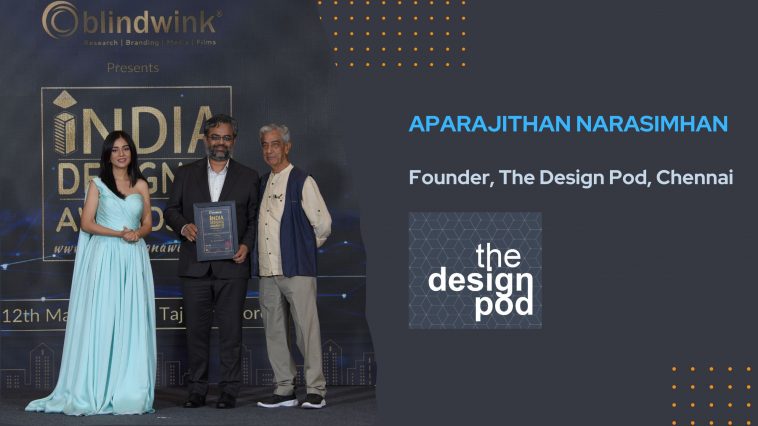Aparajithan Narasimhan – Founder, The Design Pod, Chennai
Established in 2017, The Design Pod is a flagship firm of Drawing Board to Life (OPC) Pvt Ltd that is into unique interior designing which provides innovative solutions to its clients, backed by their own manufacturing facilities for customised furniture. Based out of Chennai, they are known to provide customised interiors with complete vertical integration. Formed by a love of history, they love keeping as much of the bones of a structure as they can. Marrying in client personality in the interior is what really brings a home together. They possess a collective experience of around 30 years with vast network of architects and builders, brokers and artists. The customer centric approach of the firm is something that makes them stand apart from rest of the players in the market – The Design Pod understands client brief in an articulate manner and keep in constant touch with them at every stage of the project. That’s how they solidify client’s vision and make their dream come true.
Aparajithan Narasimhan, the founder of this firm has always been a creative person at the core of his heart and liked to build things. Furniture, buildings and cities have always intrigued him and over the years, he has grown fonder of the complexities involved in the design process and understanding what makes thing work the way they do. He specializes in trying to simplify the process and making it more efficient along the way. According to him,
“when I was working in the United States, I had a choice between doing lakhs of lines of data entry or device a way of making it simple. I chose the latter and by the time I was done, I had automated the entire data entry process. More than the end product, I find the design process to be very intriguing.”
Asking the right questions is more important to him and if his design solution can answer these questions, he considers it to be a success.
He thinks, time to complete a project is always scarce. And when you look at the design process, especially interiors, a lot of time is spent in selection of materials. With his past experience of working with the second largest builder in Washington DC where they delivered more than 1500 customized homes every year, he designed a concept to crunch the timeline for the design process from months to a few hours. Further, with support from own manufacturing facilities, they were able to reduce the dead-time in a typical project delivery cycle to make up time in a project.
Aparajithan feels that managing cash flow is the major problem for any bootstrapped business, which again leads to other issues as well. By strengthening his processes and following strict fiscal discipline, and a little bit of creativity, he was able to manage his limited resources effectively. Also, understanding the process of design delivery was important, and simplifying that process has been the key to the way he operated his business. Constant learning and upgrading his skillsets have been the consistent endeavour in his entire work life, and he feels that he has been his biggest asset as an entrepreneur.
He is of the opinion that reducing wastage and using materials that are renewable is important and is the future, and should be highly encouraged. He finds wood to be a fascinating material in a lot of ways, especially with respect to sustainability because it’s part of trees. No other material comes close to wood with regards to its availability and versatility. Part of the reason for his investment in a wood factory is to explore further in this direction.
Understanding client is key in this line of business, as word of mouth depends a lot in bringing up new projects. End user and their requirements are very important, especially when it comes to interiors because apart from the look and feel, how the furniture would function is very important in their day to day lives.
To all the new comers in this field, he advices to have the basics in place and learn about the latest trends and technologies. End users are much more advanced when it comes to their requirement, adding layers of thought to the design process thus enables to understand the same.


